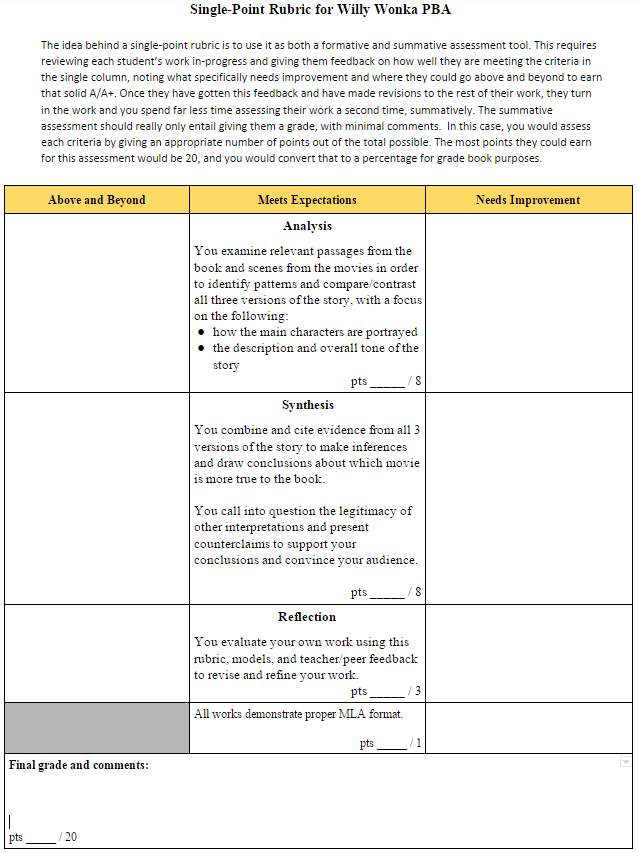This fall I wrote about some sound practices for developing rubrics that assess students’ 21st century capacities and highlighted a new kind of assessment rubric that allows teachers to assess student work both formatively and summatively–the single-point rubric. Check out this article by Jennifer Gonzalez on her Cult of Pedagogy blog, where she lays out the differences between holistic, analytic, and single-point rubrics and discusses the advantages and disadvantages of each. Which one you use, or if you decide to go with a checklist instead, really depends on your students’ needs and what the assessment calls for, but I strongly encourage you to consider single-point rubrics. As you’ll see from the article above, it really lends itself to formative feedback and functions really well as a student reflection tool.
Not happy with a rubric you’re currently using? Let me know and I will gladly meet with you and look at ways to revise its 21st century capacities criteria and make it more useful for you and your students. Too busy to meet? Send me your rubric via Google Drive and we can collaborate on it that way.
Struggling with turning analytic rubric scores into grades? You have to check out Roobrix. It’s a great tool that uses a mathematical algorithm to guarantee your grade book scores are fair.

